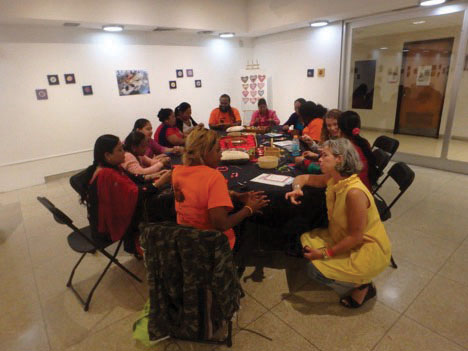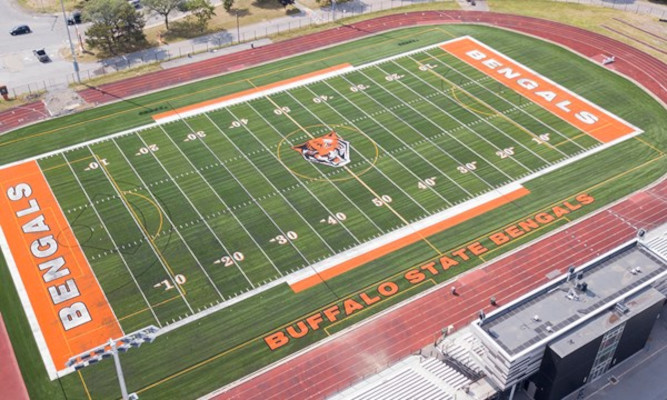Anne Frank Project encourages charity, citizenship at festival

Ribbons on a clothes line have facts, figures, and sentiments written on them for solidarity of victimized women worldwide.
September 23, 2015
Wednesday, Sept. 16 through Thursday, Sept. 17, SUNY Buffalo State welcomed a troupe of volunteers and speakers for the Anne Frank Project 2015 Social Justice Festival. The project invited students and guests to express their identity and to see ourselves inside of world issues.
“The work begins a year in advance,” Courtney Rosiek, an intern and volunteer coordinator for AFP, said. “This has been a particularly calm and organized year, especially because of people we have around us who are volunteers. How cool is it that 100 people around campus said ‘I am willing to give my time to that because it’s important to me’?”
“I think it’s the idea of community and how people work together to produce different works that have meaning, so that’s what I intend to take back to the non-profit I work for,” Amanda Irwin, a non-student who came specifically to see the festival, said.
Others, including Irene Sipos, who’s been on the advisory board for seven years, agree.
“I think it’s a beautiful project,” she said, “This is the first time we called it a festival, we only called it a conference, and the idea was to celebrate the fact that so many people are talking about social justice issues, and the fact that it’s not structured like a normal academic conference. So much of it is theater, music plays, presentations to get us feeling as well as thinking.”
Some of the activities and presentations were “Poetry and Atrocity,” where Dr. Gunilla Kester asked students to express themselves by putting feelings into words, and Stitch Buffalo, where attendees could try their hand at embroidering “Buffalove” heart pins.
Probably the most rewarding look at social justice was a conversation with Sophia, who only wanted to be known as her first name, who is a Holocaust survivor, later a special education instructor.
“During the war the public schools were closed to Jewish children, so we went to Jewish only schools,” she said. “The Germans wanted us there because they didn’t want us to be in their schools.”
“We all thought it would blow over, we thought we only had to wait four or five months. Then four or five months went by, and at first we had to wear a star. You couldn’t go to non-Jewish doctors, you couldn’t be on the same streetcars.”
“Everybody in Holland or Belgium, or France, the German’s made everybody wear an identification card, and if you were Jewish you had a ‘J’ stamped on your card. There was a curfew, and after eight o’clock, they stopped people, and if you were Jewish, they sent you to a concentration camp, a work camp in Germany.”
Later, the German’s would begin to exterminate the Jewish race with gas. When the war ended, President Eisenhower insisted on filming the camps before they were burned because he said that twenty years from that time, no one would believe this would have happened without the film.
Sophia, like Anne Frank, lived her early life in Holland, eventually hiding like Frank in a non-Jewish home. She was also betrayed at the end of the war. However, while Anne Frank died of illness, Sophia escaped a similar fate, and was able to come to a new life.
“We have to be upstanding citizens,” she said. “Not bystanders, I cut that word out of the dictionary.”
Ribbons on a clothesline have facts, figures, and sentiments written on them for solidarity of victimized women worldwide.
Men and women sit around Stitch Buffalo, a Refugee Women’s Workshop to embroider hearts for newly arrived refugees.


